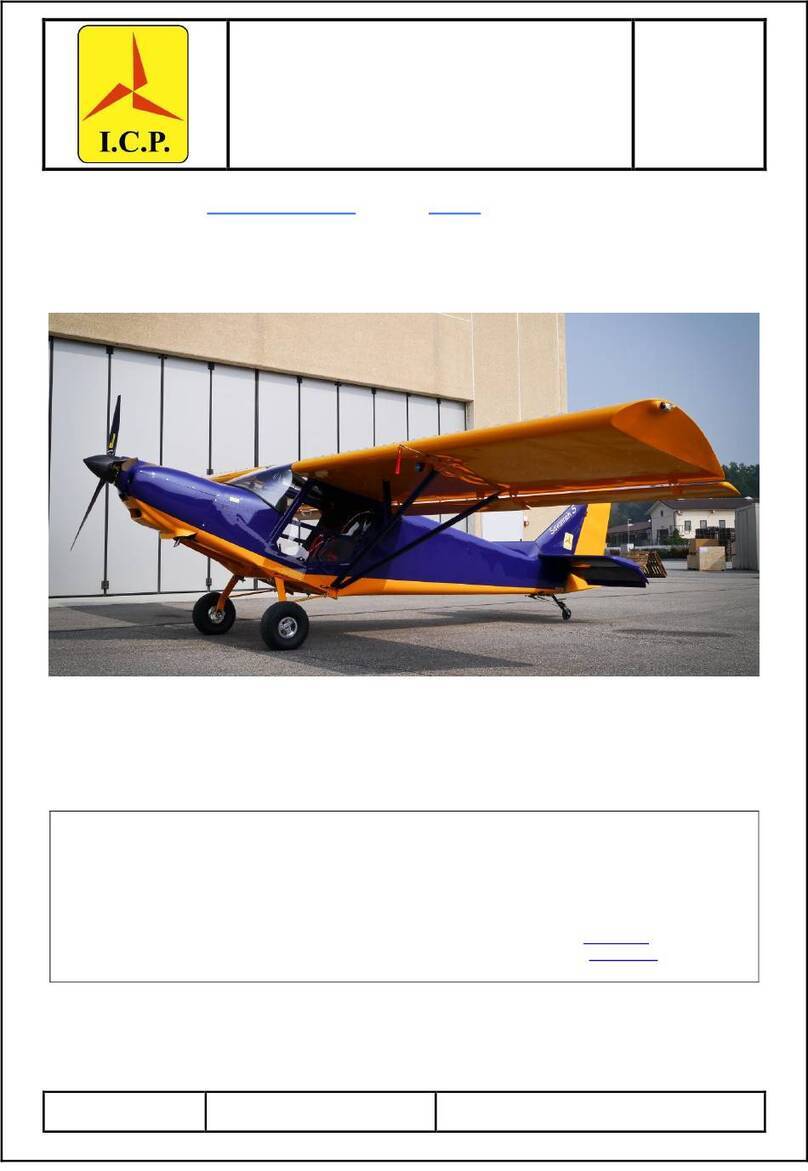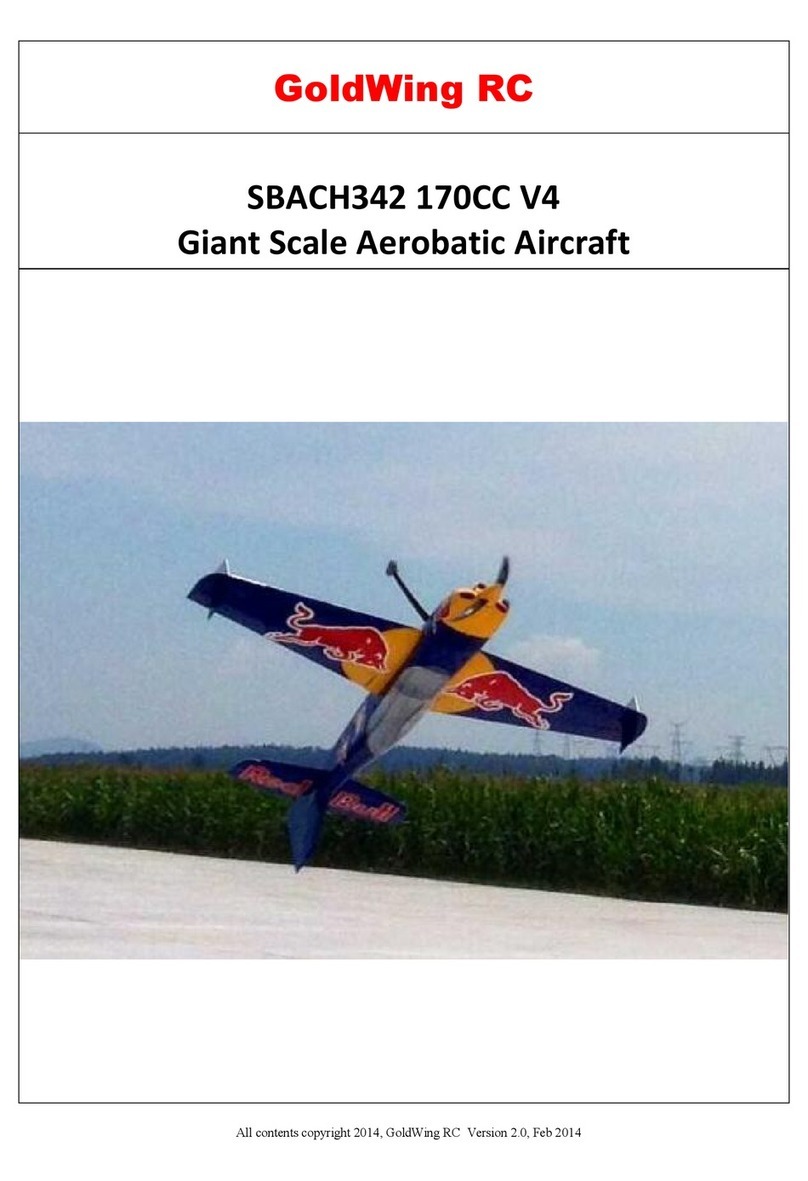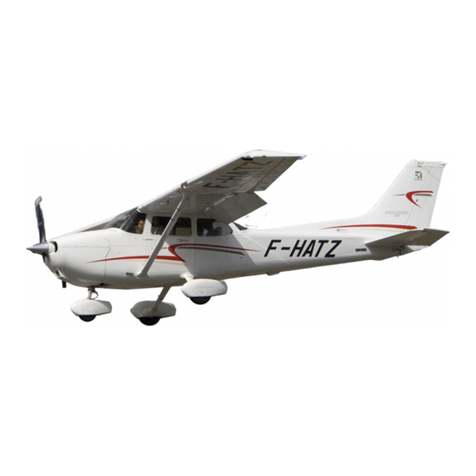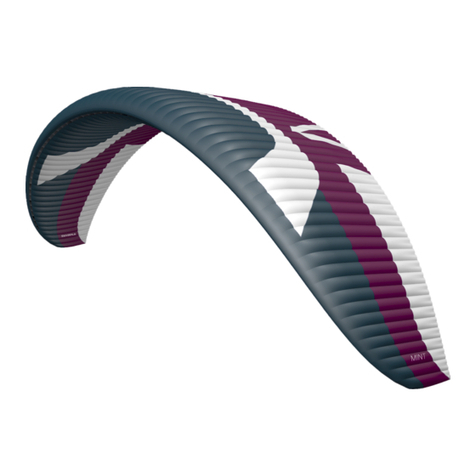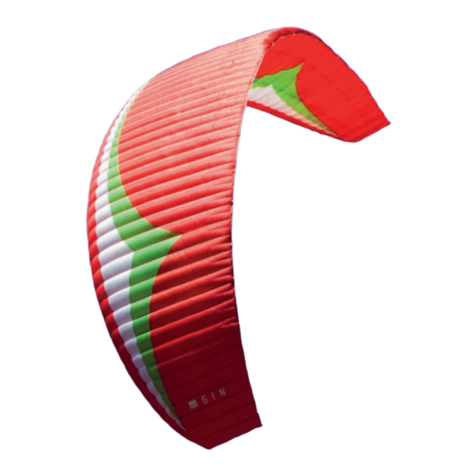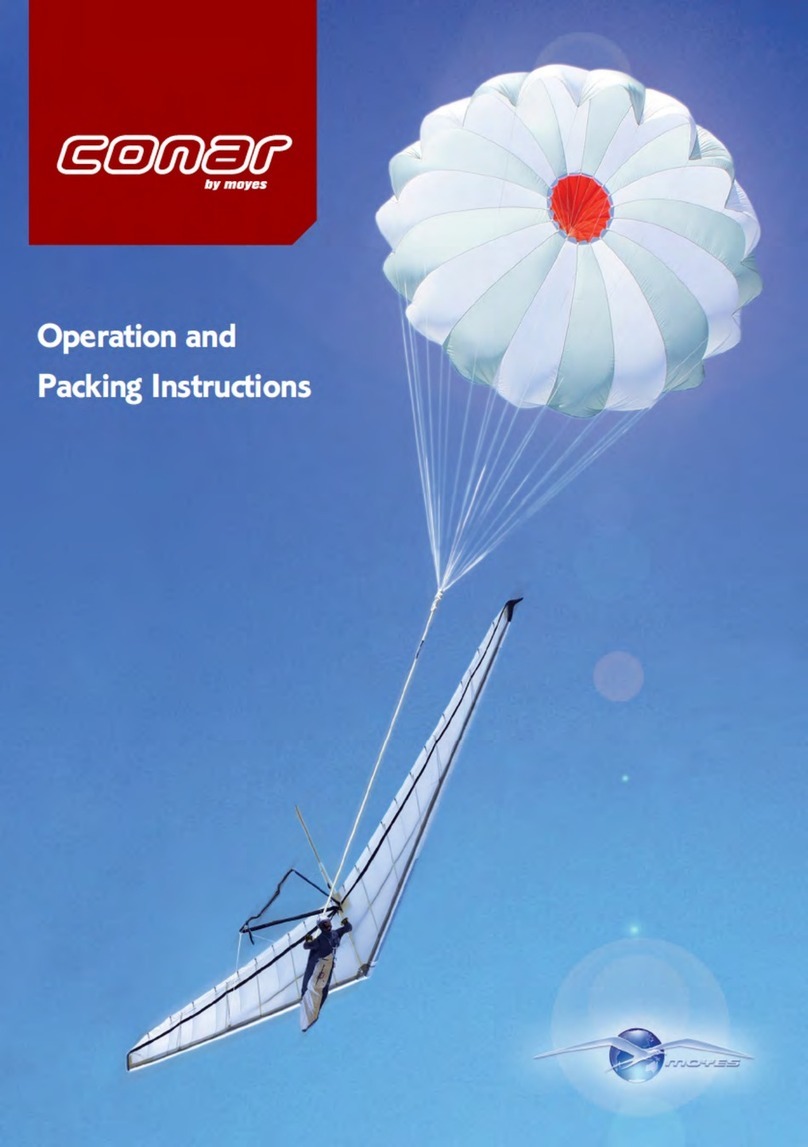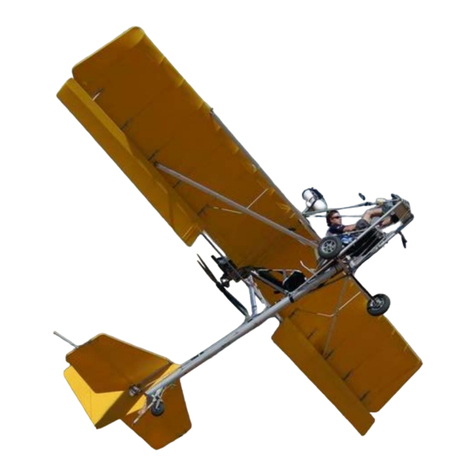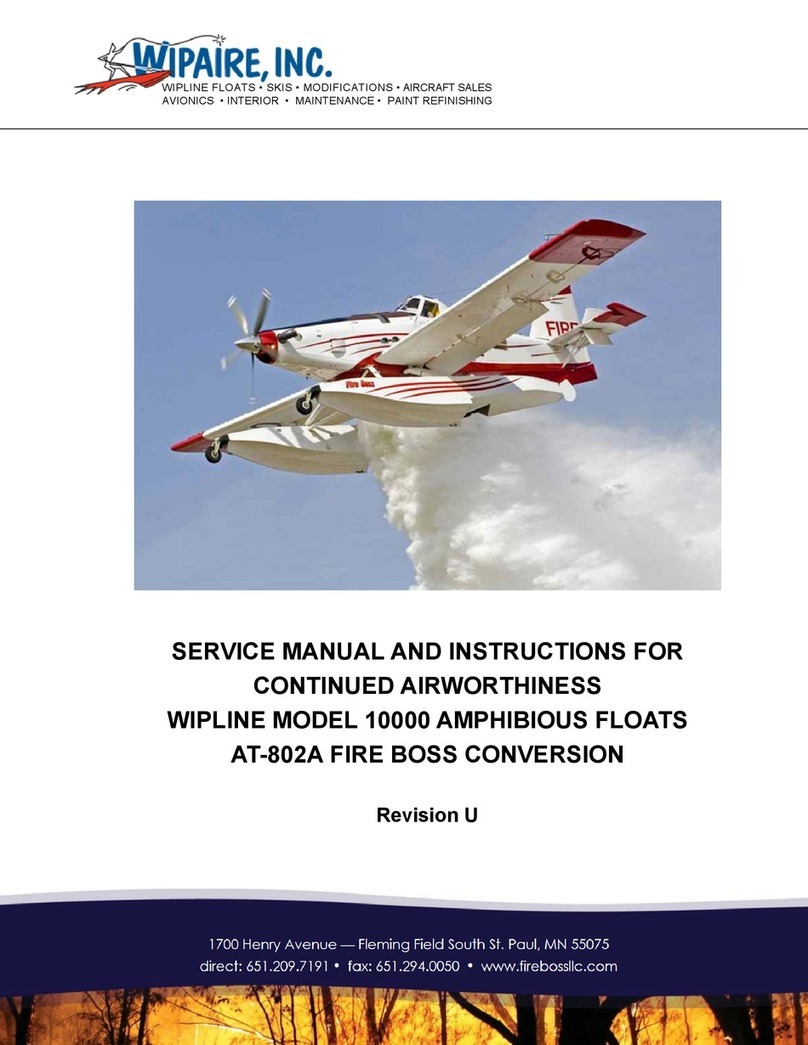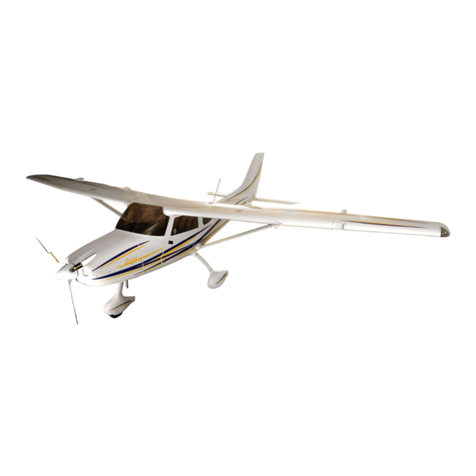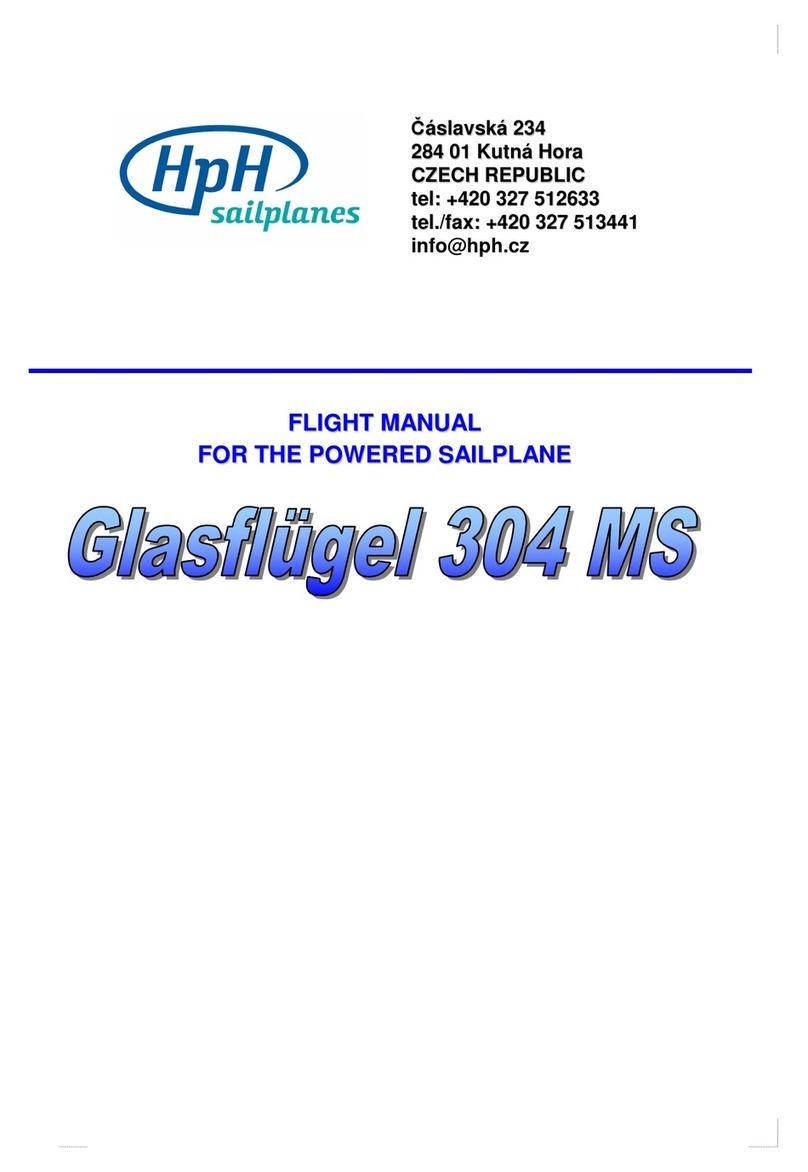PCM PINO 3.0 E User manual

PINO 3.0 E Building Instruction August 2018
www.pcm.at 1
Wing span [mm]:
3000
Wing area [dm2]:
54,7
Aspect ratio:
16,6
Take-off weight [g]:
from about 1830-2710g
Wing loading:
31,6-47,5g/dm“
Airfoil:
MP1-1,66/7,6 to MP5-1/5
5 Modern F3b-F3f airfoils
BUILDING INSTRUCTION
Allround fun glider PINO 3.0 E-Version

PINO 3.0 E Building Instruction August 2018
www.pcm.at 2
CONTENTS
DATA
1. Kit –contents
2. What else do you need?
3. Electronic equipment
ASSEMBLING THE MODEL
4. Wing
4.1 Controlling flaps and ailerons
5. Fuselage E-Version
5.1 Servoboard
5.2 Electric drive
5.3 Contacts for flaps and ailerons
5.4 Connection of V-tail controls
5.5 Canopy
5.6 Hook for winchstart
6. Ballast
7. Settings for the first flight
OTHER
8. Check list before starting
9. Notes for use
3
3
3
4
4
9
9
12
13
14
14
14
15
16
17
17

PINO 3.0 E Building Instruction August 2018
www.pcm.at 3
DATA
1. Kit –contents
Fuselage + canopy
Wing
Elevator
Lever for controlling ailerons, 2 pc.
Lever for controlling flaps, 2 pc.
Bowden pushrods for Elevator and Rudder 2 pc.
M2.5 screw rod for controlling ailerons, 4 pc.
10x lever connectors M2,5
M4 metal screws for fixing wing, 4 pc.
M4 nylon screws for fixing wing, 4 pc.
Spring-loaded contacts 4 pairs
Gap covers for aileron, flap, elevator, rudder
12mm carbon rod wing connectors, 2 pc.
12mm steel rod wing connectors, 2 pc.
6mm carbon rod elevator connector, 2 pc.
2mm carbon rod for elevator, 4 pc.
Twisted servo lead
Connectors / ballast:
Segler / Glider
Elektro
Slope
2x carbon rod
2x steel rod
2x long steel rods
2x carbon rod
2x steel rod
2x long steel rods
Medium
2x carbon rod
2x steel rod
2x carbon rod
2x steel rod
Ultralight
2x carbon tubes
2x steel tubes
2x carbon tubes
2x steel tubes
2. What else do you need:
Epoxy-glue (for example UHU 300 endfest or Pattex Stabilit)
Super glue (runny)
Electrical equipment (On/Off-switch, cables, plug...)
Electronic equipment
Shrinking tube...
3. Electronic equipment
Servo ailerons:
Servo flaps:
- KST DS 135 MG
- KST DS 125 MG
Servo rudder and elevator:
- KST X08 V5
Receiver:
- for 4 wing servos, rudder and elevator
Power Set
Tenshock EDF TS-EZ1515 - 13T - 4pol 4200KV with Micro Edition 5:1NL
1300mAh 3S Wellpower
Speed Controller 50A
Prop GM Reisenauer 14x7 (2,4kg Thrust!). Prop fits great to the fuselage.
RFM Spinner d=28mm with offset 0°

PINO 3.0 E Building Instruction August 2018
www.pcm.at 4
ASSEMBLING THE MODEL
4. WING
4.1 Controlling flaps and ailerons
Fixing the servos
First of all, prepare the surfaces which will be glued. Grind them
with a rough paper (about 80-40 grain size).

PINO 3.0 E Building Instruction August 2018
www.pcm.at 5
Then, set the servo to the zero position and screw it to the
frame. The screwing is important, because if you screw the servo
after gluing it into the wing, tension will occur and the surface of
the wing will get wavy.
The lever lengths:
Aileron: 8mm (first hole of
the smaller lever of the KST
servos.)
Flaps: 10mm (first hole of
the stronger lever of the KST
servos.)
The length is measured from
rotation center to hole center.
Flap servo:
Set the servo to its zero position and let the lever show a little bit
to the front. So you get more break deflection.
Aileron servo:
Let the lever in rectangular position.
Verify the free movement of all the parts.
It will be necessary, that you
optimize the lever
connector as shown in the
pictures besides.
It has to be done in different
ways for the flaps and for the
ailerons.
Aileron servo
Flap servo

PINO 3.0 E Building Instruction August 2018
www.pcm.at 6
Prepare the parts for gluing
the control levers into the
wing. Grind all gluing
surfaces, the slot of the
control surfaces and the
levers themselves.
The bolt of the lever
connector has sharp edges
that are bigger than the bolt
diameter. You should
remove these edges, before
you put the connector into
the lever. It is easy to clean
that bolt with nose pliers.
Grab the bolt with the nose
pliers and move the
connector up and down
about 3 times as shown in
the picture. Repeat this that
often until the connector is
able to move in the lever
hole without a lot of
friction.
Before you glue the lever into the control surface, fix the
connector to the lever.
The short lever is for the aileron and the long lever for the flaps.
You can use runny super glue to fix the levers. This kind of
bonding will be strong enough for the forces occurring.

PINO 3.0 E Building Instruction August 2018
www.pcm.at 7
Cable mounting:
Mill a hole into the preformed space for the contacts. Make the
hole big enough, so that the contacts will not touch the carbon.
We now use 2 pairs of
contacts for a redundant
connection.
Glue the contacts together.
Connect the cable as shown
and solder the ends to BOTH
of the contacts. So you get a
safe, redundant connection.
In order to secure the
soldered wirings you should
glue a piece of
plywood or GFR to it.
It is very important to
insulate all the contacts
that could touch the carbon.
We use “Plasti Dip” for such
purposes.

PINO 3.0 E Building Instruction August 2018
www.pcm.at 8
Make sure that the contact
fits easily into the free
space, which is provided for
the contact, without putting
any force on the soldered
areas.
Before you fix the contact
with a drop of runny super
glue, check if all the servos
work well.
Now you can stick the seals over the gaps.
Use the broad ones for the wing and the narrow ones for the
elevator.

PINO 3.0 E Building Instruction August 2018
www.pcm.at 9
5. FUSELAGE –electric version
5.1 Servoboard
All necessary holes are already
pre-milled.
(Here a Pino 2.5m fuselage is
shown. Some of the following
pictures are taken from the Pino
2.5. The difference is very little)
CNC milled wood parts are
included in the kit for mounting
the
KST X08 V3.
Set the parts together with
toothpicks.

PINO 3.0 E Building Instruction August 2018
www.pcm.at 10
Glue everything with super glue
and then cut off the toothpicks.
Mount the servos as shown in
the picture.
Lengthen the servo cables, so
they reach the receiver
comfortable.
The lever lengths are:
For both servos: 7mm
It will be necessary, that you
optimize the lever connector
as shown in the picture beside.
Grind free space for the servo
axle.

PINO 3.0 E Building Instruction August 2018
www.pcm.at 11
Now screw the narrow board to
the bottom of the servoboard.
In order to glue it into the
fuselage, put a mixture of
epoxy-cottonflocs just onto
this narrow board.
Then put the servoboard into
the fuselage. Connect the
horns to the pushrods and set
everything to zero (servos and
control surfaces).
Then press the board down to
glue it well to the bottom.
If you want to change the servos
sometime, you can loosen the
screws through the holes in
the fuselage.

PINO 3.0 E Building Instruction August 2018
www.pcm.at 12
5.2 Electric drive
Now glue the motor mounting
into the fuselage.
Grind a 45° angle to the edges
of the motor mounting and put it
1mm deeper into the fuselage
to get a bigger gluing area.
We recommend the following
power set:
- Tenshock EDF TS-EZ1515 -
13T - 4pol 4200KV
with Micro Edition 5:1NL
-1300mAh 3S Wellpower
-Speed Controller 50A
-Reisenauer 14x7 (2,4kg
thrust!). Prop fits great to the
fuselage.
- RFM spinner d=28mm with
offset 0°
Here you see everything
installed.
If you optimize the cable
lengths, you win a lot of space to
mount something else.

PINO 3.0 E Building Instruction August 2018
www.pcm.at 13
5.3 Contacts for flaps and ailerons
Next, let’s finish the aileron
and flap contacts for the
fuselage.
The cable length should be
about 35cm.
Pay attention that you solder
the contacts in the same
way as they are soldered in
the wings.
Double the contacts again
for redundant connection.
Then glue again a thin piece
of GFR to the wirings and the
soldered parts.
So you insulate and
strengthen the soldered
parts.
Now glue the left and the
right cable part together.
The rest of the contacts have
to be insulated.
Before you fix the contacts to
the fuselage with a runny
super glue, make a test, if
everything is contacted
well.

PINO 3.0 E Building Instruction August 2018
www.pcm.at 14
5.4 Connection of V-Tail control surfaces and carbon joiners for fuselage connection
Just set the servos and the control surfaces to zero and glue the
lever connectors to the pushrods.
The black teflon should be removed before gluing.
The 6mm carbon rods should be glued into the fuselage. If
you want more more transport comfort you could also leave
them unglued. But check the fittings before every flight. The
Fittings should be tight. If they loosen you have to make
them tight again with a drop of superglue.
5.5 Canopy
We use a very simple solution to mount the canopy.
Just glue the carbon stick into the canopy. Note that the gluing
spot is only in the middle of stick and canopy, so you can
thread the stick into the fuselage while the canopy remains on
the outer side. (here the method is shown on a glass canopy)

PINO 3.0 E Building Instruction August 2018
www.pcm.at 15
6. BALLAST
Included in the kit:
- 2x carbon rod
- 2x steel rod
The 2x long steel rods are just delivered if you ask for.
You can use these rods as follows:
- 1x carbon rod for very weak conditions in the front
hole.
Adjust the CG of the plane with this rod inside. Don`t set
full charge on the wing at this configuration.
- 2x carbon rods for weak conditions
- 1x carbon + 1x steel rod for stronger conditions
- 2x short steel for even stronger conditions.
- For extra strong conditions you could insert two 50cm
long steel rods. That ballast weights 880g (+836g to
the lightest weight).
- When you fly with this setting, you have to take care that
you don`t overload the wing structure. So, use the
elevator cautiously, when you fly with that much ballast.
Remember also that the landings have to be very soft
with such an additional weight.

PINO 3.0 E Building Instruction August 2018
www.pcm.at 16
7. SETTINGS FOR FIRST FLIGHT

PINO 3.0 E Building Instruction August 2018
www.pcm.at 17
OTHER
8. Check list before starting:
1. Check centre of gravity
2. Check control surfaces:
Do control surfaces move in the correct direction?
Check the greatest swings
3. Check reception
4. Check control surfaces before each flight.
Do all control surfaces still move correctly?
Is there enough power in the accumulator?
Are the brakes retracted?
You can save the retraction of the brakes in your start
setting. By this, you can never start with extended
brakes.
5. Gentle launch in the flat. If there are some wrong settings,
you will realize it during a gentle throw in the flat.
9. Notes for the use
To avoid heating of the carbon surface, models with carbon
wings should not lie in the sun.
During flight heating by the sun is no problem, as the model is
cooled by the wind. On ground the glider should be kept
inside protective bags or in the shade.
After every ungentle landing, you must check your model for
possible damage, such as:
- Is the radio board still glued thoroughly?
- Did the leading edge of the wing burst open?
- Did rudder or elevator get damaged?
Table of contents
Other PCM Aircraft manuals
Popular Aircraft manuals by other brands

Composite-ARF
Composite-ARF Extra 300SX instructions

Aircraft Industries
Aircraft Industries L 33 SOLO Flight manual

DG
DG DG-500M Flight manual

DG Flugzeugbau
DG Flugzeugbau LS8 Series Flight manual
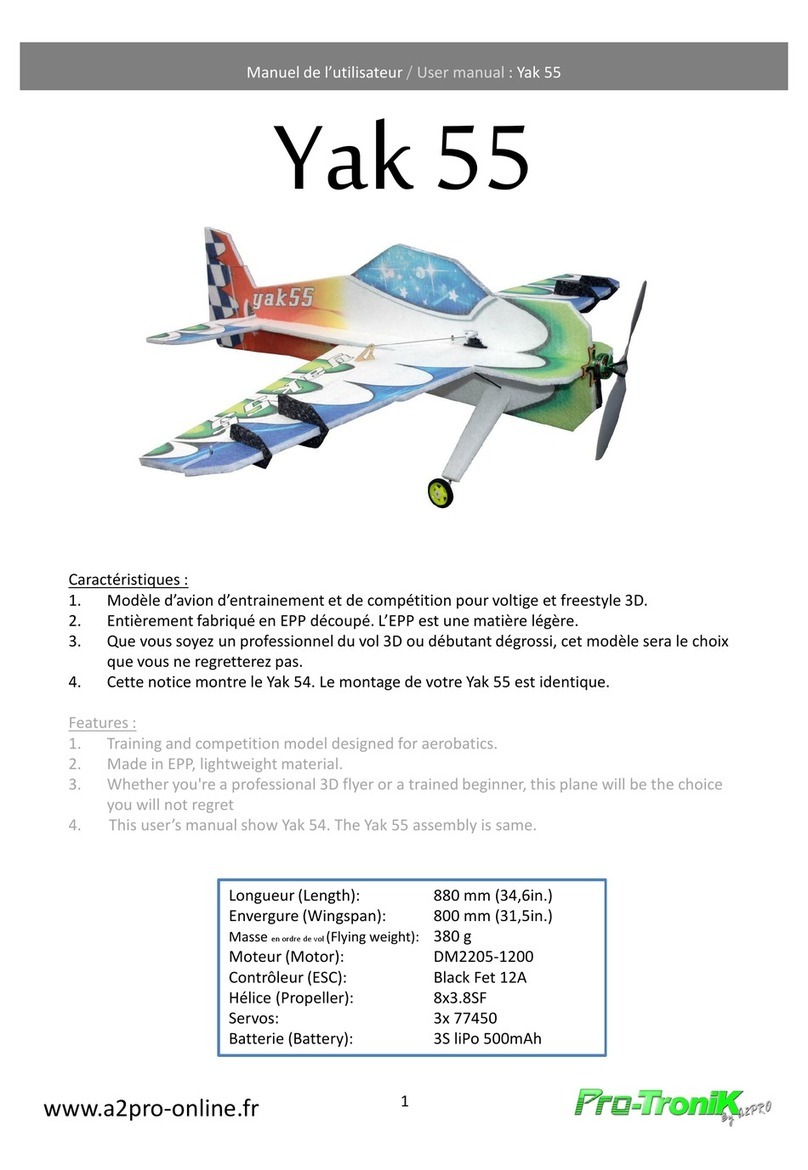
Pro-Tronik
Pro-Tronik Yak 55 user manual

Pipistrel
Pipistrel ALPHA Trainer Pilot's operating handbook and flight training supplement


